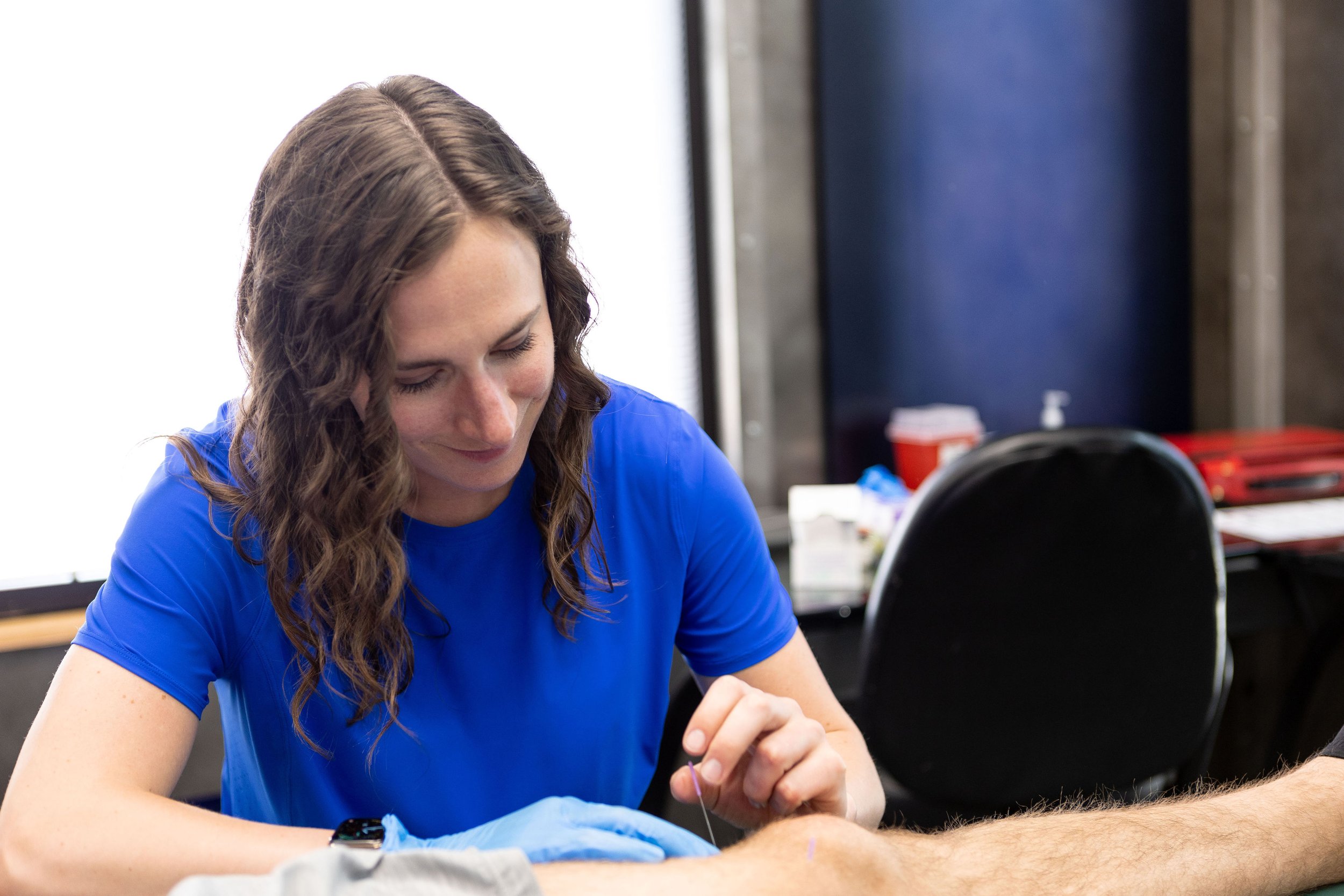
Dry Needling at Atomic
Decrease pain and inflammation and improve healing time with trigger point dry needling at Atomic
Introduction
At Atomic PT we like to use dry needling as a part of your rehab journey. But what is dry needling?
What is it?
Dry needling involves the insertion of a thin filiform needle into tissue that is determined to have trigger points. Typically, the result of inserting the needle leads to a twitch response in the muscle which relieves muscle tension, pain, and stimulates the healing process.
What is a trigger point?
A trigger point is a sensitive area of tight muscle fibers that can form after injury, compensation from an injury, or overuse leading to hindered range of motion, loss of strength, and/or pain. During your assessment, we palpate for trigger points as evidence shows the greatest improvement when these are relieved through needling.
Dry needling can be used for a host of injuries including but not limited to:
Tendonitis
Tight muscles
Scar tissue
Joint pain
Muscle strains
Fibromyalgia
DOMS (delayed onset muscle soreness)
and MORE!
What type of injuries benefit from dry needling
Is dry needling the same as acupuncture?
They are similar but not the same. The focus of dry needling is to identify the trigger points and treat those with the needles. Acupuncture is based on ancient Chinese medicines and focuses on meridians, energy, and chi. There are benefits to both techniques, however, if your problem arises from a musculoskeletal condition, you will benefit more from dry needling.
Does dry needling hurt?
Generally, no! Typically, you won’t even feel the needle enter your skin and if you do it’s a very minimal poke. The biggest sensation people typically experience is the muscle contraction which varies among muscles and individuals. Most describe the sensation as aching or cramping.
Do I need to change my day after treatment?
No! In fact, we encourage you to continue moving and exercising after needling to help with soreness and decrease pain. The benefit of dry needling is improved with movement, especially the program given to you by your physical therapist. If you are sore, incorporating heat will also help ease the discomfort.
FAQs
Get started with a free Atomic PT consultation
There’s no commitment, pressure, or obligation




